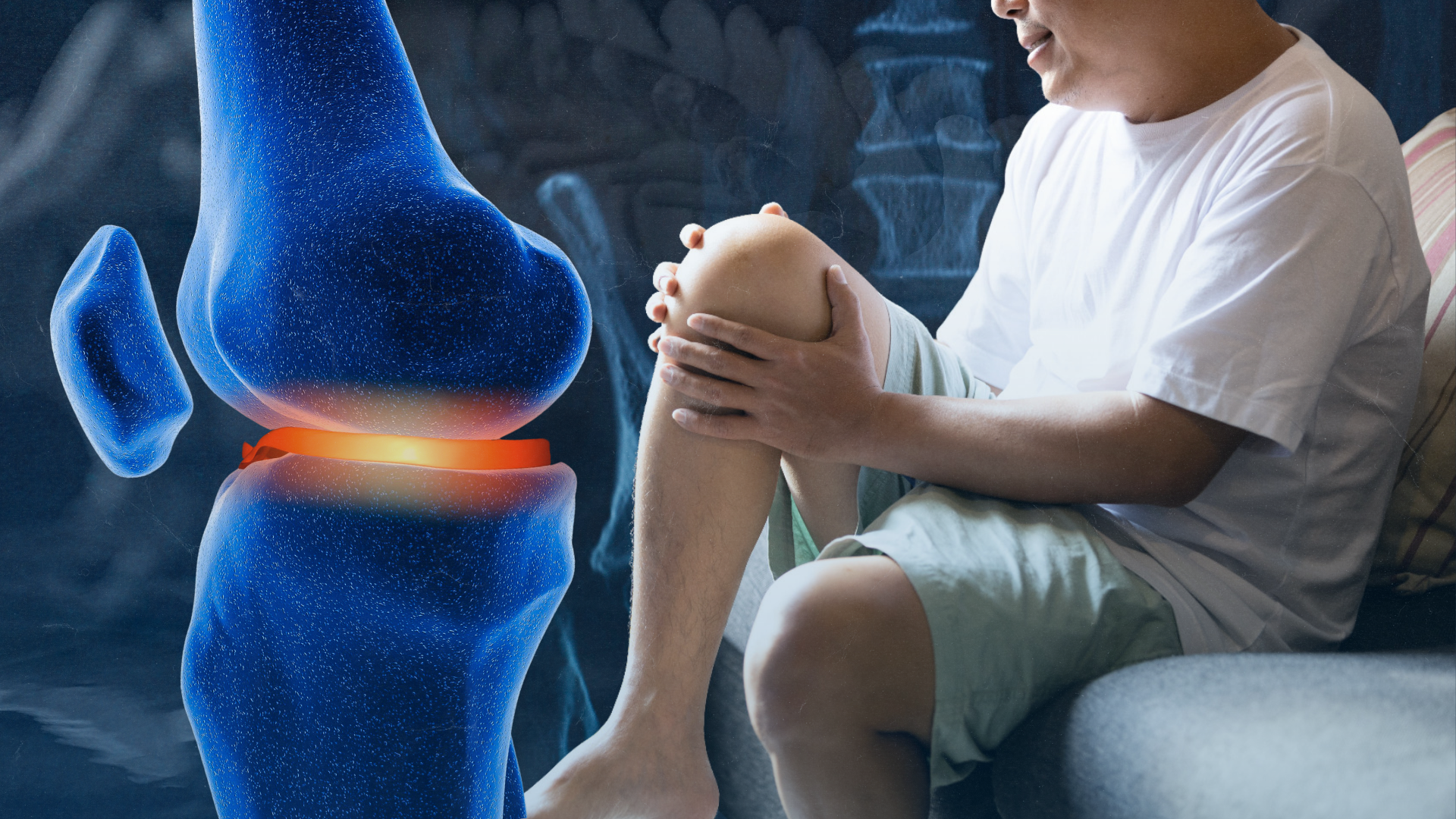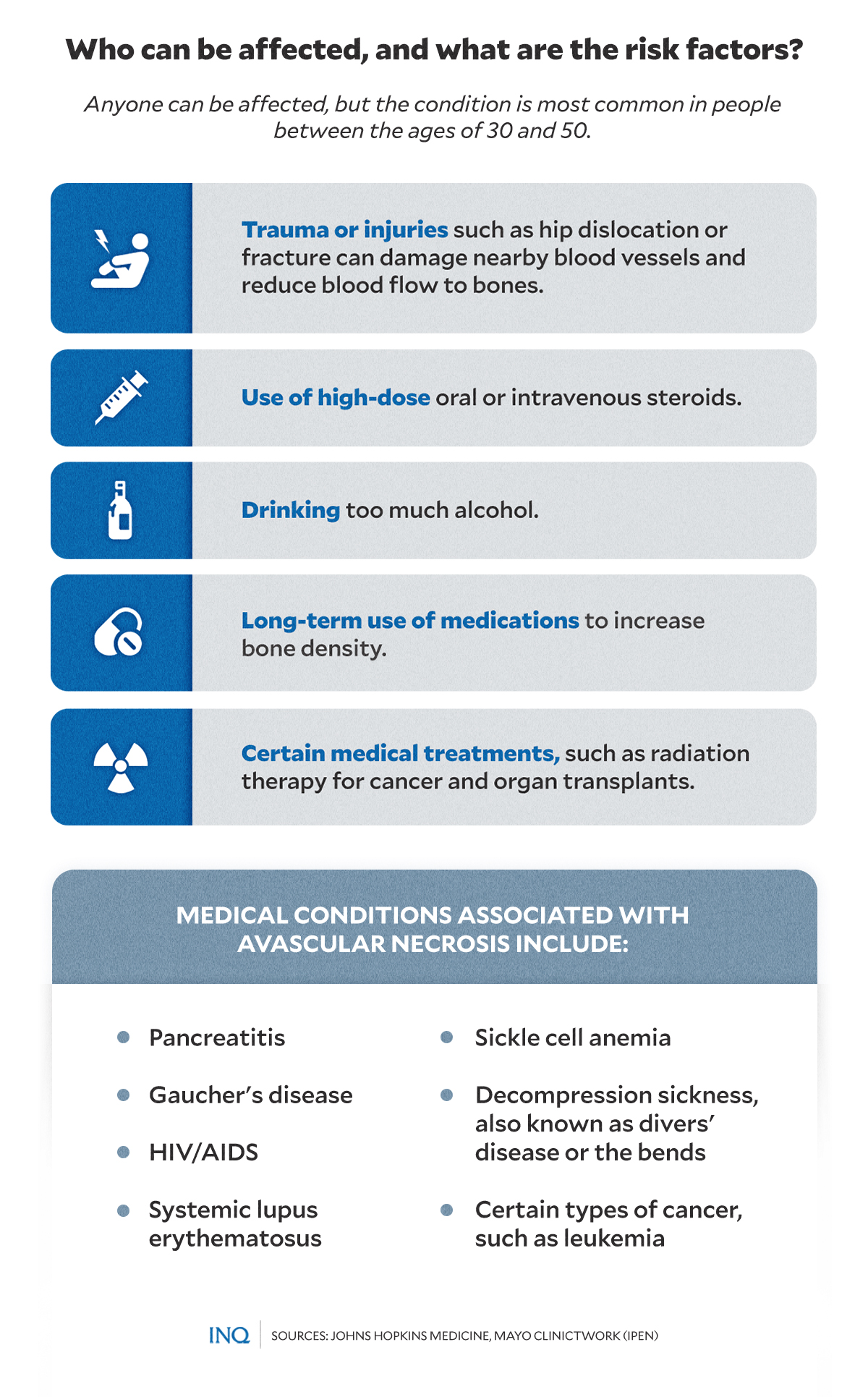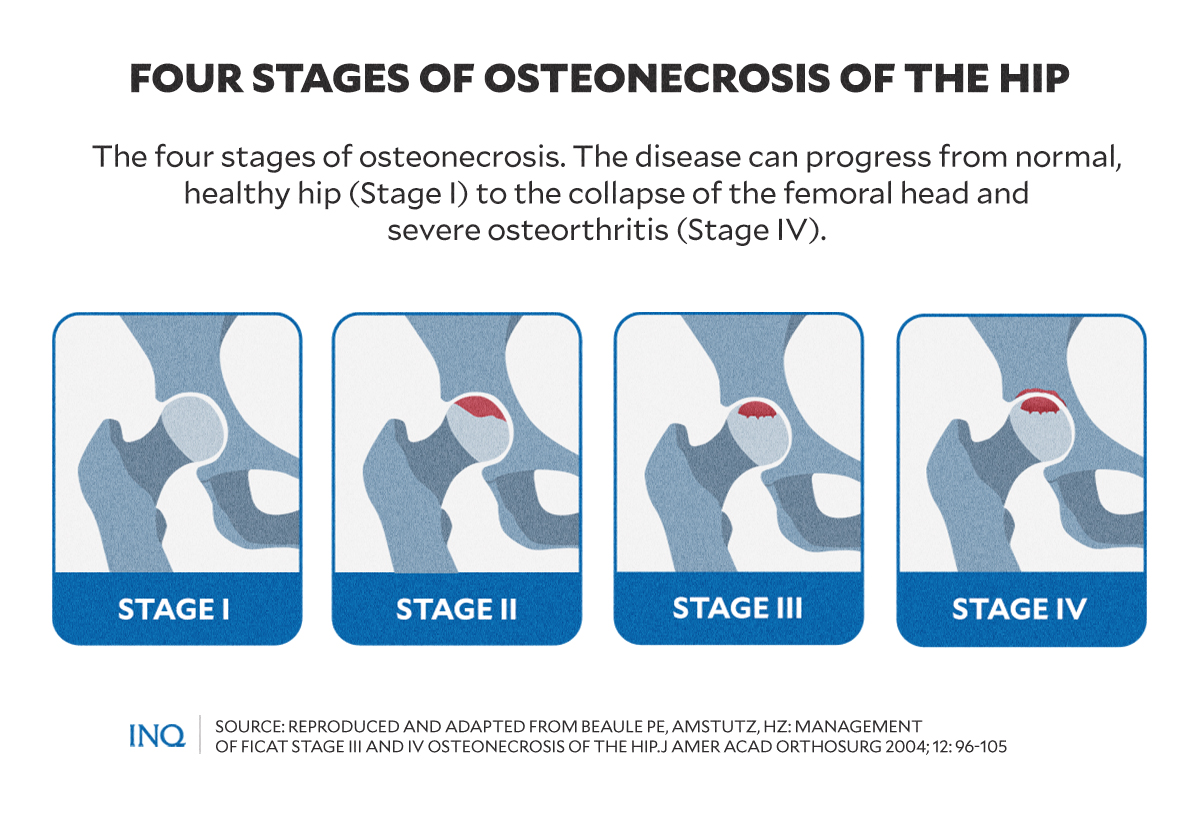Osteonecrosis or ‘bone death’: What to know about Angelica Panganiban’s excruciatingly painful disease
MANILA, Philippines—Actress Angelica Panganiban recently opened up about her battle with osteonecrosis — also called avascular necrosis — a bone disease that has been causing her severe pain in the hip area.
In a vlog last Nov. 18, the actress revealed that she started experiencing pain in the hips when she was around six months pregnant with her daughter Amila Sabine. At the time, she thought of the pain as part of her pregnancy.
Panganiban further recalled that she began experiencing pain again in the hip while doing physical exercises and yoga, which she brushed off, thinking it was a pinched nerve. The pain would then worsen to a point when, during a trip to Palawan, she was rendered almost immobile by the severe pain.
READ: Angelica Panganiban bares battle with painful bone disease
She eventually sought help from a bone specialist and was diagnosed with avascular necrosis or a so-called “bone death.”
According to Johns Hopkins Medicine, osteonecrosis or avascular necrosis is a disease caused by the temporary or permanent loss of blood supply to the bone.
Article continues after this advertisement“When blood supply is cut off, the bone tissue dies, and the bone collapses. If avascular necrosis happens near a joint, the joint surface may collapse,” it explained.
Article continues after this advertisementCleveland Clinic explained that the structure of bones in the body undergoes continuous transformation, with the skeletal system generating fresh bone tissue to replace those that are aging and which eventually break down and die.
“Think of this as a cycle — your body makes new tissue to replace the tissue that’s breaking down and dying. This pattern needs to happen correctly to keep your bones healthy and strong,” Cleveland Clinic noted.
“Blood carries the nutrients and oxygen bones need to stay healthy and regenerate. Without blood flow, your skeletal system can’t make new bone tissue fast enough. The dying bone begins to crumble and eventually collapses,” it added.
Who is at risk?
While anyone can be affected by the disease, it is most common in people between the ages of 30 and 50.
Among the risk factors for developing osteonecrosis include:
- Trauma or injuries such as hip dislocation or fracture can damage nearby blood vessels and reduce blood flow to bones.
- Use of high-dose oral or intravenous steroids.
- Drinking too much alcohol.
- Long-term use of medications to increase bone density.
- Certain medical treatments, such as radiation therapy for cancer and organ transplants.
Meanwhile, Cleveland Clinic noted that some medical conditions associated with the disease include:
- Pancreatitis
- Gaucher’s disease
- HIV/AIDS
- Systemic lupus erythematosus
- Sickle cell anemia
- Decompression sickness, also known as divers’ disease or the bends
- Certain types of cancer, such as leukemia
Causes and symptoms
Osteonecrosis, or avascular necrosis, occurs when part of the bone does not get blood flow and dies.
“After a while, the bone can collapse. If osteonecrosis is not treated, the joint deteriorates, leading to severe arthritis,” Penn Medicine explained.
Joint and bone trauma, fatty deposits that can block the small vessels, and certain diseases such as sickle cell anemia and Gaucher’s disease may also cause osteonecrosis.
According to medical experts, symptoms might not show up in the early stages of the disease. In some cases, it might take weeks or months before the symptoms show.
Among the symptoms that appear over time include:
- Intermittent pain that appears and eases when you put pressure on your bone and then remove the pressure.
- Increasing pain and stiff joints.
- Limited range of motion.
- Limping if you have avascular necrosis in your hips or knees.
- Difficulty climbing stairs, standing, or walking.
Osteonecrosis develops in stages, with hip pain as a typical first symptom among patients, according to the American Academy of Orthopaedic Surgeons (AAOS).
“This may lead to a dull ache or throbbing pain in the groin or buttock area. As the disease progresses, it becomes more difficult to stand and put weight on the affected hip, and moving the hip joint is painful,” AAOS said.
In Panganiban’s case, she said that the excruciating pain in her hip caused her to have a tough time doing physical activities such as swimming, working out, and even walking.
How to reduce risk
Preventing osteonecrosis, according to Penn Medicine and Cleveland Clinic, may not be possible since many cases do not have a known cause. However, there are ways that can help reduce the risk of getting the disease, such as:
- Cut back or limit alcohol intake.
- When possible, avoid high doses and long-term use of corticosteroids.
- Keep cholesterol levels low.
- Quit smoking.
- Follow safety measures when diving to avoid decompression sickness.



